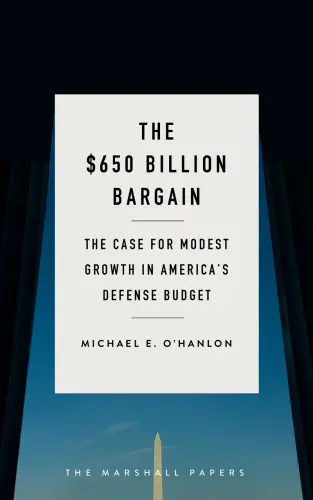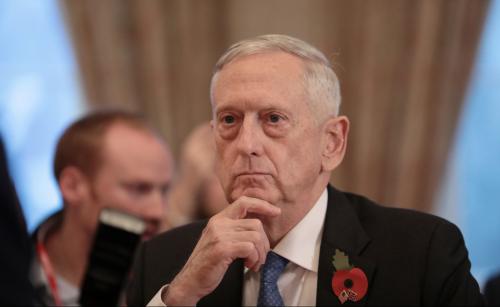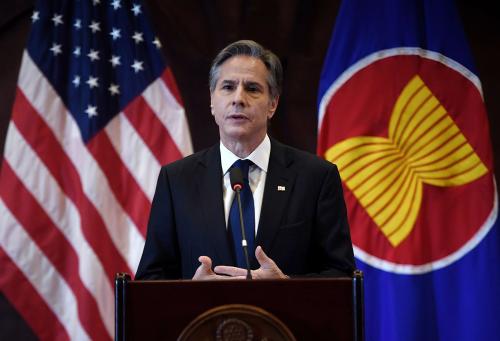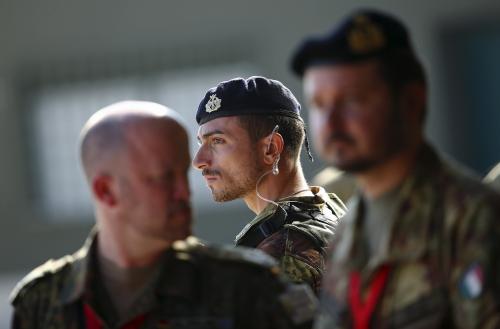Like my colleagues Mara Karlin and Tom Wright, I am generally impressed by Secretary of Defense Jim Mattis’s 2018 National Defense Strategy or NDS, which builds on the December 2017 National Security Strategy of President Donald Trump and sets out further guideposts for future defense planning. The NDS’s emphasis on technological innovation and development of new capabilities, the clear-eyed focus on Russia and China as greater potential threats than ISIS or al-Qaida, the emphasis on preserving American operational flexibility and unpredictability (as underscored in the fact that the main body of the document is classified), and the strong commitment articulated in the NDS to the well-being of America’s men and women in uniform and their combat readiness, are all welcome.
While supporting the Strategy’s main emphases, I would nonetheless offer three main caveats or gentle warnings, which are especially important given that we do not know what the classified NDS says and we cannot know what budgets will be available to the Department of Defense in the years ahead to fund the priorities articulated by Secretary Mattis.
1My first mild concern is that the NDS, like the National Security Strategy released in December, paints China and Russia with more or less the same brush. I understand why both are serious concerns for the Department of Defense and the nation. But they are, to my mind, very different kinds of challenges.
Russia is a smaller, ultimately weaker power and yet at present a more dangerous one. We know from President Vladimir Putin’s words and actions that he sees checking American and Western influence as perhaps the main goal of Russian national security policy. He may not be reckless in most situations, but his military forces sometimes do act recklessly near NATO military forces. Moreover, his brutal actions from Georgia to Ukraine to Syria have seriously and directly challenged the international order. He is complicit in the deaths of many people because of the aggressive military actions his forces have taken, and the fact that his nuclear button links to an arsenal of 5,000 warheads is highly worrisome.
By contrast, China’s assertiveness in recent years has mostly been limited to uninhabited maritime areas or islands where the direct human consequences of its actions are less risky or sanguinary, and where the international rules of the road are somewhat less clear. I see China as a rising country attempting to assert itself, but doing so in ways that are relatively mild to date by the standards of rising powers. China is still dangerous, and its military budget is already 1/3 of ours and growing, and its future behavior is of course somewhat hard to predict. But it is, for all its flaws, less intent on directly overturning the current global order and more interested in finding a way to promote its own interests at least largely within that order. It is still dangerous, because even if I am right, a future Chinese leader could be less careful than Xi Jinping and could have even more resources at his or her disposal to pursue ambitious aims. At present, however, I see it as substantially less threatening than Russia—or, at least, threatening in a different way that requires a different type of American response.
2For a document released in early 2018, the lack of attention to possible regional adversaries in general, and North Korea in particular, is striking. To be sure, many of our immediate plans for enhancing deterrence and promoting combat readiness in and near Korea are necessarily classified. I would rate the chances of war against North Korea in coming years as substantially higher than the odds of fighting Russia or China—and, if war occurred on the Korean peninsula, it would, as Secretary Mattis said last year, probably be far worse than anything the world has witnessed in recent decades.
The Korea contingency highlights slightly different issues and concerns than does competition with either Russia or China. The Department of Defense (DoD) needs to devote considerable attention to issues ranging from being prepared for chemical weapons attack, to handling large barrages of artillery, to defending against a wide range of ballistic missiles, to planning for a possible occupation and stabilization of North Korea, to thinking through how we would manage the risks of inadvertent conflict with China in such a scenario.
3Finally, there is the question of money. As I write, we literally still do not know if the 2018 national defense budget will be closer to $700 billion than to $600 billion, even though the fiscal year is already nearly 1/3 over. Secretary Mattis was right to complain about that fact, a manifestation of poor governance in Washington. Over the last decade, as Mattis pointed out recently, there has only been one year in which a regular budget was passed on time. But this still begs the question of what the Department of Defense would do if its budget winds up much smaller than hoped, this year or in the future.
We do have one clue from the new Strategy. The NDS, and Secretary Mattis himself in a January 19 question and answer session after his speech announcing the strategy, place more emphasis on developing new “capabilities” than on expanding “capacity.” In other words, the Department of Defense will emphasize innovation, modernization, and acquisition more than it will prioritize the expansion of the size of the military.
I think this prioritization is correct—to a degree. The Trump administration to date, and the military services, have articulated ambitious goals for growing the armed forces: expanding the Navy to 355 ships, the Army to well over 500,000 active-duty troops, and other services commensurately. These expansions are not needed, to my mind; much more modest increases in the size of the force should be adequate, as the NDS seems to suggest, especially if we can find more innovative and efficient ways to manage the military (as I think we can and should).
However, if overall defense budgets prove smaller than planned, it would be a mistake to preserve innovation by actually cutting the force. In the event that belts must tighten at DoD, and even in the absence of such immediate austerity, DoD needs to look for ways to economize in some of its modernization plans. Innovations like the B-21 bomber, new opportunities in artificial intelligence and robotics, new unmanned aerial vehicles and unmanned underwater vehicles, greater redundancy in space systems, and stronger hardening of electronics systems against cyber attack or nuclear attack should be fully funded. But the F-35 fighter program, the anticipated ICBM modernization program (at least at current scale and on the current schedule), and the Navy ambition to grow its fleet 25 percent in the next couple decades are among the current priorities that warrant a fresh look.
So as we go forward, and the National Defense Strategy is used to guide policy and budgetary choices, I hope ideas like the above will be kept in mind. The NDS is very good, but it is not perfect, and of course it does not and could not settle all major defense issues before the country.








Commentary
On the 2018 National Defense Strategy
January 21, 2018